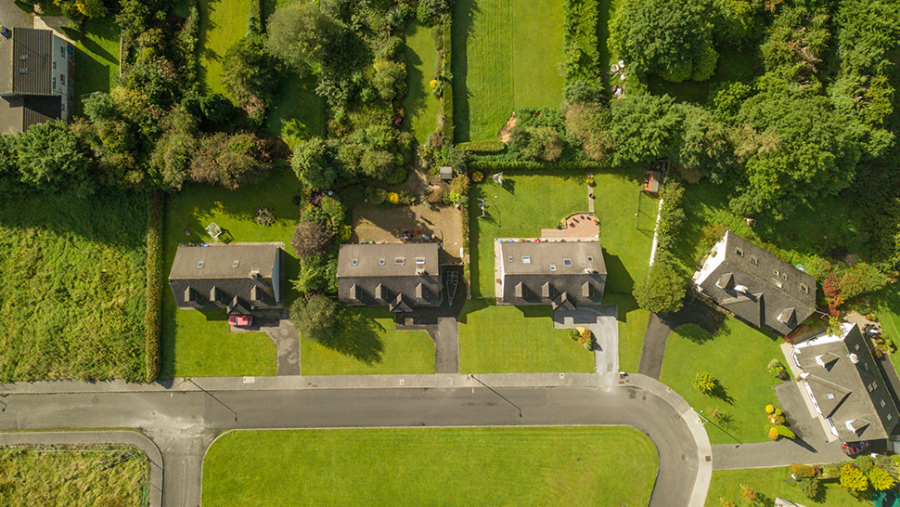

You have some overgrown grass or shrub highway land next to your property. The council never maintains it. Maybe even you maintain it. The public never use it and there is no obvious current or future public need for this highway land. Is it possible to acquire private control and ownership of this highway land? Maybe even fence it into your property? The short answer is yes.
The Two-Step Process to acquiring Unused Highway Land
The key legal principle to understand when considering the prospects of acquiring unused highway land is that its status as public highway is distinct and separate to ownership of the land. A highway is a public right of way over land. It is not concerned with the freehold ownership of the land itself. In fact, the majority of the freehold of public highway in England is not owned by the local councils (as highway authorities).
Accordingly, the completion of the following ‘two-step process’ is necessary to successfully acquire unused highway land (and fence it into your property):
- Step 1 – Purchase the freehold.
- Step 2 – Extinguish the public highway rights.
Each of these steps is discussed below. There is no order to the steps in that either can be undertaken first and generally they are instigated and progressed together to avoid wasted costs. In other words, if Step 2 cannot be achieved then there is little merit in progressing Step 1 to completion. Once you successfully achieve both steps then you are free to enclose the unused highway land.
Step 1 – Purchase the freehold
One of the first investigations you should do when considering the acquisition of unused highway land is to research the title history of the freehold of such land. There are various avenues for investigation. For example:
- Check if the land is registered at HM Land Registry. If it is then approach the landowner as to whether they would sell it and for how much;
- If the land is unregistered then research the history and age of the public highway, and in particular how it became highway. Could the rebuttable legal presumption of freehold ownership up to the middle of the public highway apply for you (known as the ‘ad medium filum rule’)?; and
- If the previous corporate owner has been dissolved then the land could have been passed back to the Crown and become what is known as bona vacantia or escheat.
When considering freehold ownership it is important to note that you cannot acquire legal title to land by way of adverse possession while it is subject highway rights. If you wish to acquire unused highway by adverse possession then the clock on such claim (ie. 12 years for unregistered land) would only start running from the date the highway is extinguished (per Step 2 discussed below).
Step 2 – Extinguish the public highway rights
The extinguishment of public highway rights is known in law as ‘stopping up the highway’. It can only be authorised by a statutory empowered process. The two most common options for the extinguishment of unused highway land are:
- ‘Section 116 Application’ – The first option is to apply to the local highway authority for the stopping up of the public highway rights under sections 116 and 117 of the Highways Act 1980. If the authority accepts your application then it will, usually at your cost, make an application to the local magistrates court for a stopping up order. Only when the order is made will the public highway be extinguished.
The legal test is whether the highway is unnecessary, and it is a discretionary decision of both the highway authority and local magistrates. There are prescribe timescales for decisions under section 116 and no rights for a merits appeal.
- ‘Section 247 Application’ – The second option is to first make a planning application to the local planning authority for a material change of use of the land to ‘private residential garden’, together with any other works that may be required such as a boundary wall/fencing or building extension. If planning permission is granted then you apply for an order stopping up the highway under section 247 of the Town and Country Planning Act 1990. This is not a re-run of the planning merits with the presumption in favour of a stopping up order unless there are good reasons not to. The application is to the borough councils in London or the Department for Transport if outside London.
The legal test is whether it is necessary to stop up the highway to enable the granted planning permission to be implemented. A planning refusal can be appealed on its merits to the Planning Inspectorate in the usual way, and there are prescribed timescales for planning decisions.
Some common issues to consider for both Section 116 Applications and Section 247 Applications are: (i) any highway safety issues; (ii) any current or future highway need; and (iii) any street scene amenity issues (eg. green spaces).
How can we help?
Our Planning and Highways Solicitors Team can guide you through both steps from start to completion. For Step 1 we can research title and history of the unused highway land. For example, we can register freehold at the HM Land Registry based on the ‘ad medium filum rule’ and similarly deal with the acquisition of land from the Crown Estates that has become ‘bona vacantia’ or ‘escheat’.
For Step 2 we have successfully progressed both Section 116 Applications and Section 247 Applications. Therefore, we will not only be able to guide you through either option but also advise you on the merits and which option is best for your case.
Accordingly, if you have any questions or wish to discuss further, then the Planning and Highways Solicitors Team will be able to assist.










